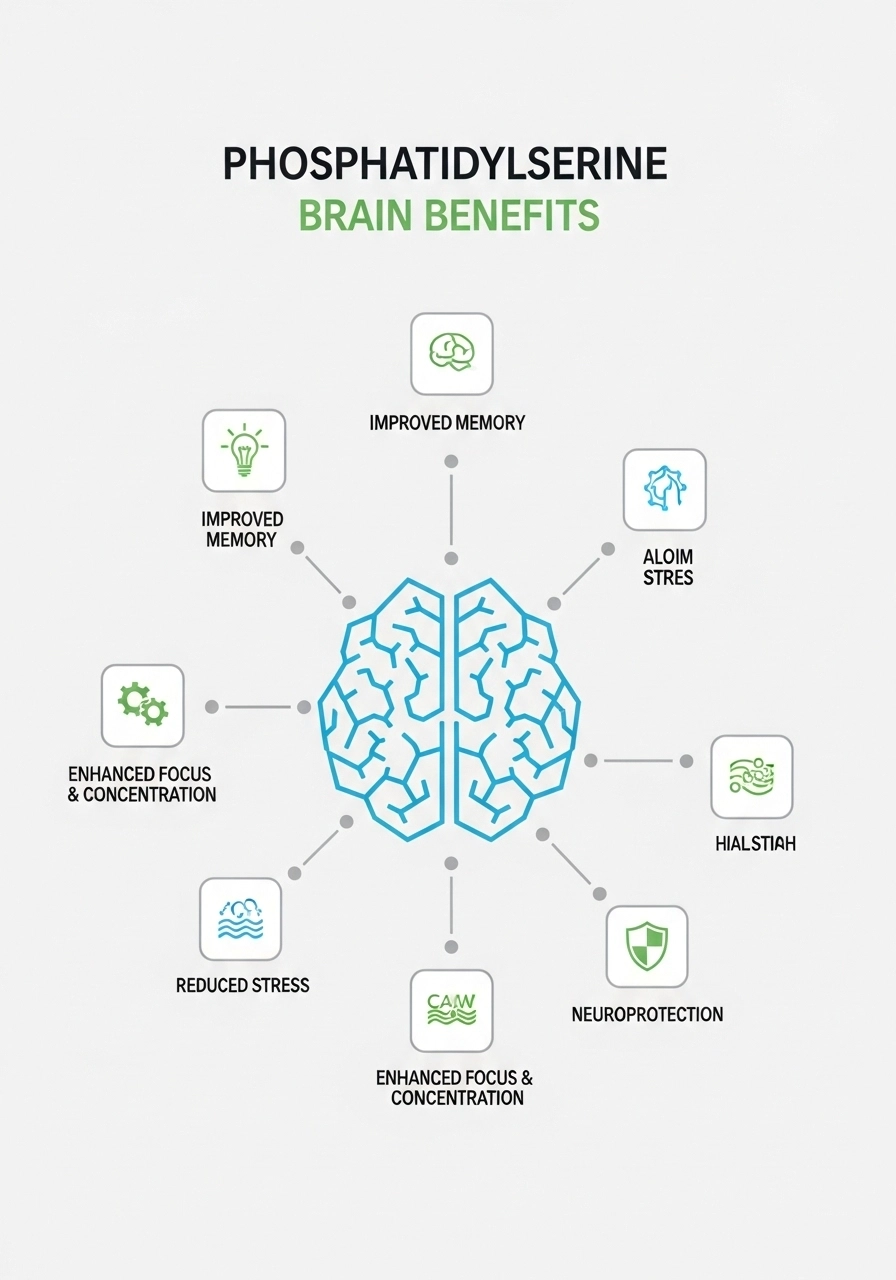

Introduction: Why Phosphatidylserine is in the Spotlight
Phosphatidylserine (PS) is a phospholipid that is part of cell membranes, especially in brain neurons.
It is responsible for transmitting signals between cells, maintaining membrane flexibility, and protecting against damage.
In autumn, when the academic season begins, phosphatidylserine is often included in complexes for improving memory, concentration, and thinking speed.

How Phosphatidylserine Works
- Improves nerve impulse transmission — optimizes neurotransmitter function.
- Reduces cortisol levels — helps with stress and fatigue.
- Supports brain plasticity — promotes faster learning and adaptation to new information.
- Protects cells from oxidative stress — provides antioxidant action.
📌 In the study by Crook et al. (1991), in people with age-related memory decline, taking 300 mg of phosphatidylserine for 12 weeks improved memory and attention.
Table 1. Sources and forms of phosphatidylserine
| Source | Features | Bioavailability |
|---|---|---|
| Soy | Classic source, most research | High |
| Sunflower | Hypoallergenic option, soy-free | High |
| Combined nootropics | With omega-3, B vitamins, choline | Optimized effect |
| Food sources (fish, eggs) | Contain small amounts | Low (supplements required for therapeutic effect) |

Who Benefits from Phosphatidylserine
- Schoolchildren and students during periods of academic load
- People with age-related memory changes
- Athletes to reduce cortisol levels after workouts
- Those working under high stress or requiring high concentration
Table 2. Dosages and indications
| Goal | Recommended dose | Course |
|---|---|---|
| Memory, concentration | 100–300 mg/day | 8–12 weeks |
| Stress, high cortisol | 200–400 mg/day | 4–6 weeks |
| Sports, recovery | 200–400 mg/day | On training days |

Practical Tips
- The greatest effect comes from a PS + omega-3 combination — improves reaction speed and reduces inflammation.
- For children, it is better to choose chewable gummies or powders with a neutral taste.
- Standardization matters: look for the % of phosphatidylserine per dose on the label.

Precautions
- Not recommended for soy allergy (choose sunflower-based)
- Pregnant and breastfeeding women — only under medical supervision
- Do not exceed the recommended dose — excess does not enhance effect and may cause digestive upset
References
- Crook TH et al. “Effects of phosphatidylserine in age-associated memory impairment.” Neurology. 1991.
- Jäger R et al. “Phosphatidylserine: a phospholipid nutrient for memory and mood.” Journal of the International Society of Sports Nutrition. 2007.
- Hellhammer J et al. “Supplementation with phosphatidylserine reduces stress responses in humans.” Stress. 2004.




